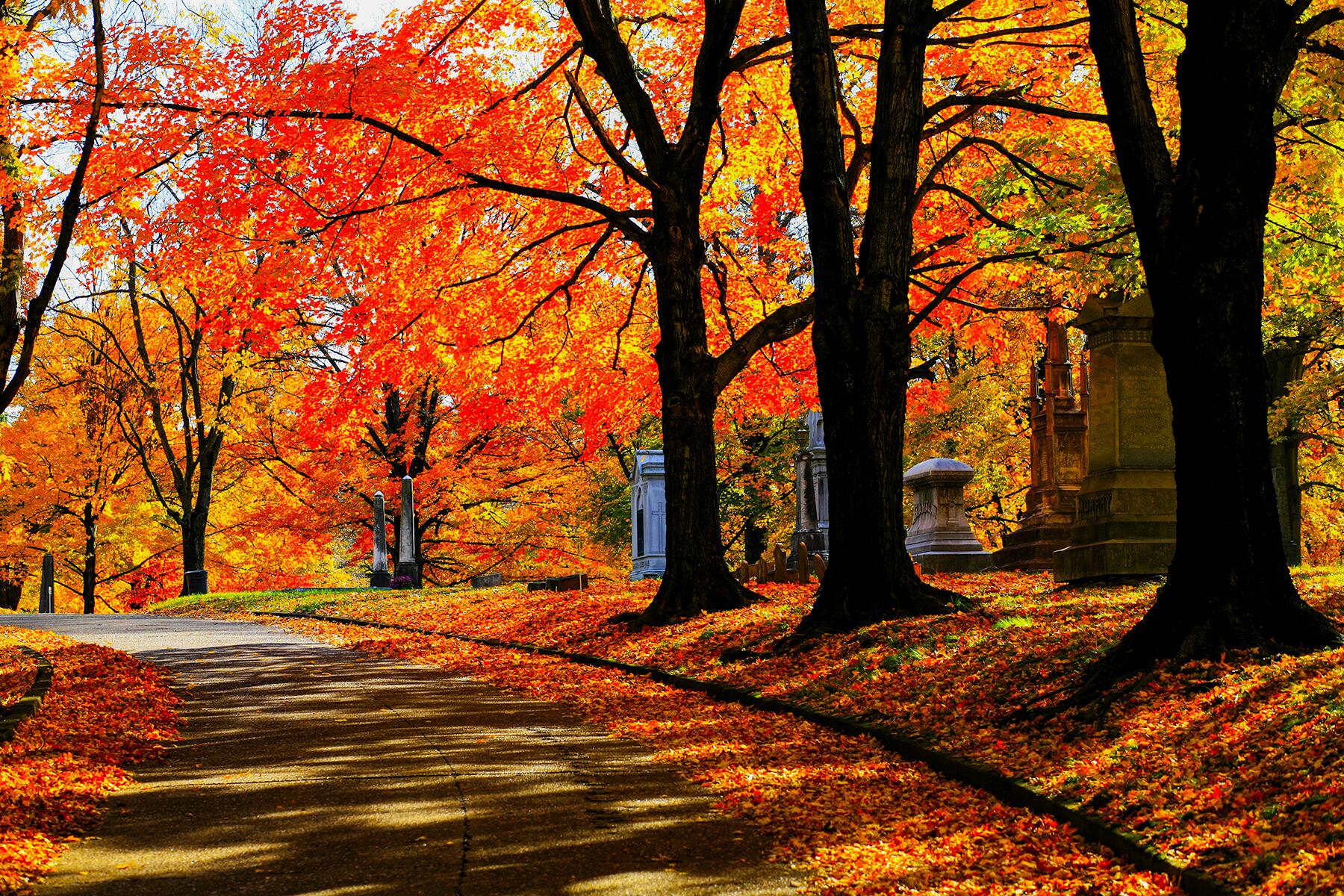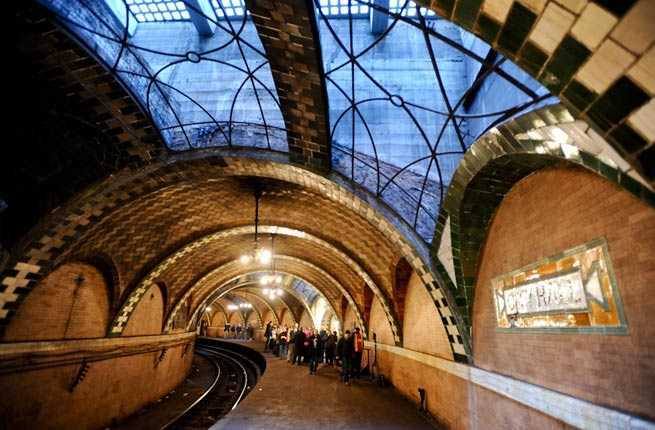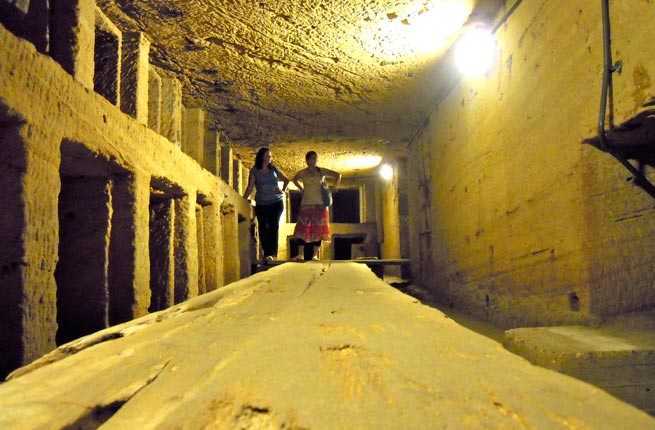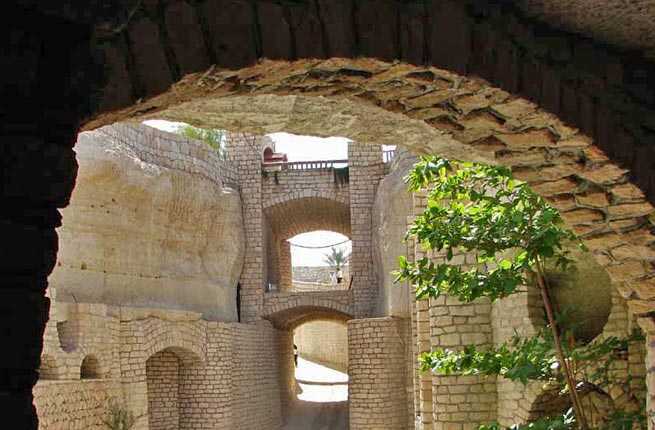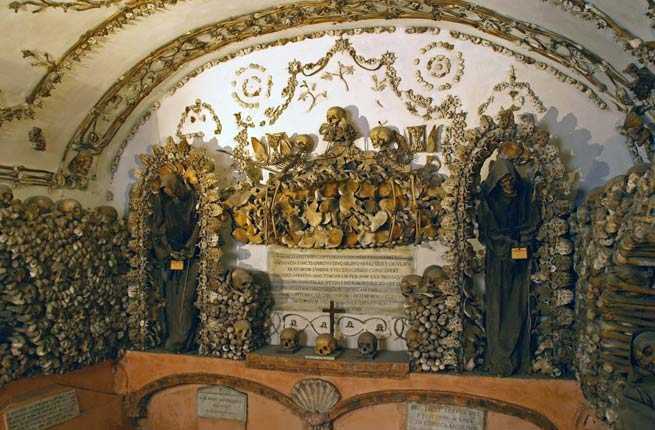
Meandering the streets of a new city is a great way to feel its pulse, but have you ever considered what's right below your feet? These thirteen underground, man-made attractions, scattered around the globe, boast spectacular histories as former dwellings, burial grounds, and even smugglers' tunnels. And you can bet they're more than a little creepy. You'll want to make sure you dress warmly for all of them (no matter when you visit), and be sure to arrive armed with a steely constitution.—Amanda Oppold
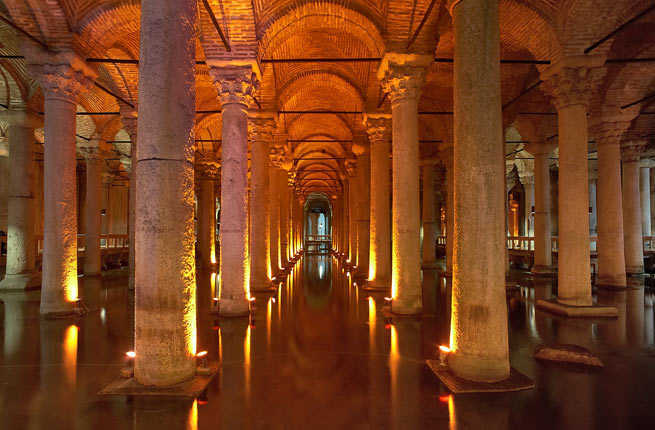
Basilica Cistern
Istanbul, Turkey
One of the pivotal settings in Dan Brown's book Inferno, the Basilica Cistern is an awe-inspiring historical sight. Built in 532 AD, the cistern was used to store water for the Great Palace of Constantinople and other buildings. The cistern, located near the Hagia Sophia, has a capacity of 100,000 tons of water, although today the bottom is only filled with several feet of water. Supported by 336 eerily lit marble columns, the cistern commands a majestic presence as you walk along the raised wooden platforms and see the fish swimming smoothly through the shadowy water. Make sure to check out the popular and mysterious Medusa head pedestals whose origin and orientation continue to baffle experts today.
PLAN YOUR TRIP: Visit the Fodor's Istanbul Guide

Paris Catacombs
Paris, France
In the late 18th century, Paris had a dire public health problem due to a large number of unburied corpses. Parisians sought the solution underground in quarries that had supplied the rock to build the city. Six million skeletons were exhumed and arranged in the catacombs, which are as deep as a five-story building, and include artistic arrangements of skulls and bones—don't miss the giant urns made of skeletal remains. Although much of the 200-mile network is out-of-bounds to the public, the 45-minute tour is a great peek. Make sure to arrive early, as the attraction is incredibly popular.
PLAN YOUR TRIP: Visit the Fodor's Paris Guide
City Hall Subway Station
New York, New York
For a ghostly architectural gem in New York City, hop on the 6 train and stay on past the Brooklyn Bridge stop. As the train loops around you'll pass by gorgeously decorated arches, skylights, intricate colored glass tilework, and burnished brass light fixtures in the now-unused City Hall station. The station was opened in 1904 and was meant to be the crown jewel of the new subway, but due to low traffic numbers and an unsafe gap at the platform, the station was closed in 1945. The mystique and spooky, abandoned beauty of this hidden jewel is well worth the train ride.
PLAN YOUR TRIP: Visit the Fodor's New York City Guide

The Cu Chi Tunnels
near Ho Chi Minh City, Vietnam
During the Vietnam War, the communist guerilla Viet Cong were vastly outnumbered and equipped with inferior technology compared to the American and South Vietnamese troops. To combat this, the Viet Cong expanded tunnels created during an earlier war against the French, and used these underground routes to house troops, transport supplies, and lay booby traps. The residents of Cu Chi slept, ate, wed, and even gave birth in these underground abodes to avoid detection. While getting to the tunnels is a bit of a trek (expect a 2.5-hour bus ride from the city), the tour and tunnels are an amazing sight. Make a day out of it by combining the tunnel tour with a trip to the nearby elaborate Cao Dai Temple.
PLAN YOUR TRIP: Visit the Fodor's Ho Chi Minh City Guide

Capuchin Crypt
Rome, Italy
For one of the eeriest sights in the world, visit the Capuchin Crypt. Located beneath the church of Santa Maria you'll find the skeletal remains of 3,700 Capuchin friars. In 1631, when the monks moved to the church, they brought cartloads of deceased friars to be arranged in the burial crypt. Over the course of years, a cyclical process developed where long-dead friars were exhumed to make room for recently deceased friars' burials, the exhumed bones were then placed into the crypts' elaborate designs. What makes this crypt more chilling than the Paris Catacombs is the true artistry and intricate displays in the six crypts. Enter the crypt and gaze upon artwork all framed by various human bones, skull chandeliers, and intricate bone designs. Visitors must wear modest clothing and be prepared for a macabre scene.
PLAN YOUR TRIP: Visit the Fodor's Rome Guide
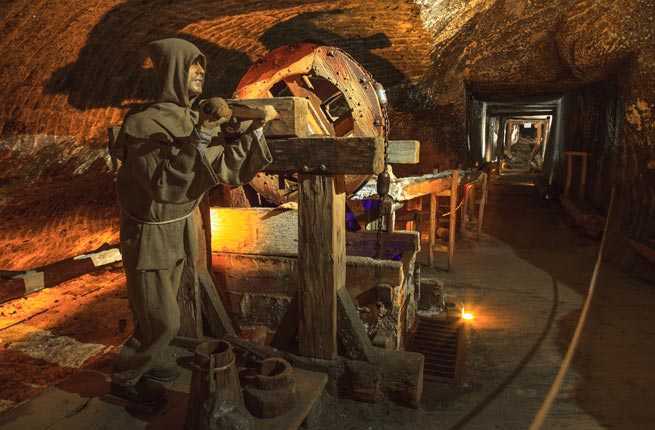
Wieliczka Salt Mine
near Krakow, Poland
One of the world's oldest operational salt mines, Wieliczka is more than 700 years old. The mine is a UNESCO World Heritage site and features dozens of beautiful sculptures, twenty chambers, three chapels, and an entire cathedral carved into and from the rock salt. Visitors should be ready for a leg workout as you will descend 800 steps into the mine (don’t worry there's an elevator to take you up!). Enjoy listening to Chopin and watching a light show play on a saline lake, or admire the incredible Chapel of St. Kinga. Adventurous guests can choose the Miner's Route tour and act the part of a real miner. The mine is also renowned for its health benefits and features a health resort that offers subterranotherapy—a treatment created at the mine that uses the underground environment's medicinal properties to treat respiratory illnesses and balance the body.
PLAN YOUR TRIP: Visit the Fodor's Krakow Guide
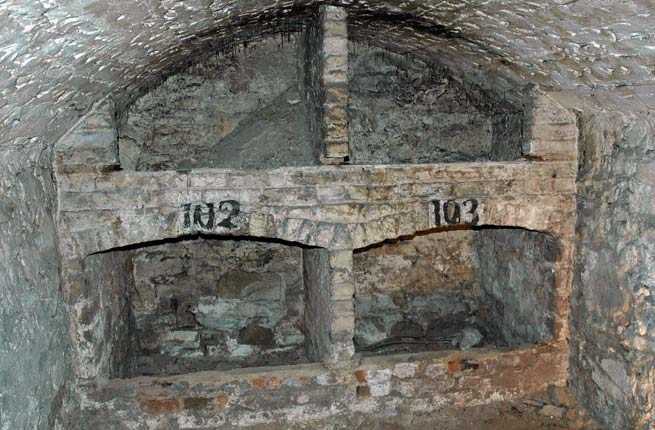
Edinburgh Vaults
Edinburgh, Scotland
Hidden beneath Edinburgh's South Bridge are over 120 rooms that were used as secret living places for Edinburgh's poor. The vaults were originally meant as a storage space for local businesses, however they flooded, conditions deteriorated and Edinburgh's slum dwellers became the new inhabitants. The passages and vaults also gained a reputation as a renowned red light district until they were closed in the late 19th century. Since their rediscovery in 1988, visitors have reported ghostly sightings. Take a tour of these haunted underground abodes and you may feel the presence of a former inhabitant.
PLAN YOUR TRIP: Visit the Fodor's Edinburgh Guide
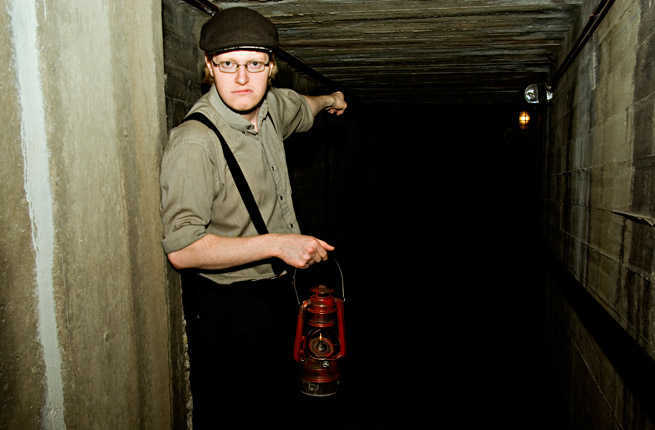
Moose Jaw
Saskatchewan, Canada
During Prohibition, Chicago bootleggers like Al Capone, stashed and transported their goods through the secret underground tunnels of Moose Jaw, in Saskatchewan. In the early 20th century, illegal Chinese immigrants created tunnels and living spaces underneath the residences and businesses of legitimate Chinese immigrants to avoid persecution and deportation. When prohibition started, bootleggers began using the underground system for their own nefarious purposes. Today visitors can choose between the Passage to Fortune tour which tells the story of the Chinese immigrants, or the Chicago Connection tour in which you play the high-suspense part of a bootlegger come to buy booze from Capone. Period costumes and decorations make these tours a must-do.
PLAN YOUR TRIP: Visit the Fodor's Canada Guide
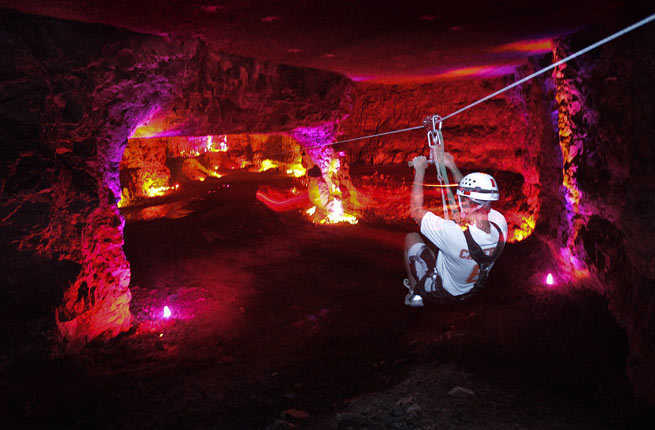
Louisville Mega Cavern
Louisville, Kentucky
For the largest building in Kentucky, visit the Louisville Mega Cavern , which spans over 100 acres and has over seventeen miles of underground passages. Opened in the 1930s as a limestone mine, the Mega Cavern now offers the world's only fully underground zipline and a challenging 76 element rope course. Nothing will make your hair stand on end quite like jumping off into utter blackness. Guides' creepy stories of the ghost of a Native American girl who haunts the cavern add to the thrills and chills. Other visitors can take the tram for a less stomach-dropping experience. After Halloween, get into the winter holiday spirit beginning November 20 for “Lights Under Louisville,” featuring over two million light points.
PLAN YOUR TRIP: Visit the Fodor's Louisville Guide
Catacombs of Kom el Shoqafa
Alexandria, Egypt
To view the unique integration of Ancient Egyptian art and Greco-Roman styles visit the Catacombs of Kom el Shoqafa, which was built in the 2nd century AD for a single wealthy Egyptian family and was the last major construction for the old Egyptian religion. Travel down the circular staircase along the wall and imagine the bodies they used to lower down the middle. Within the catacombs you can see sculptures that display the stiff poses of Ancient Egypt but with the carved head style of Greece or popular ancient Roman hairstyles. This combination of cultural influences is incredibly rare, as many similar tombs were ruined by earthquakes and construction.
PLAN YOUR TRIP: Visit the Fodor's Alexandria Guide
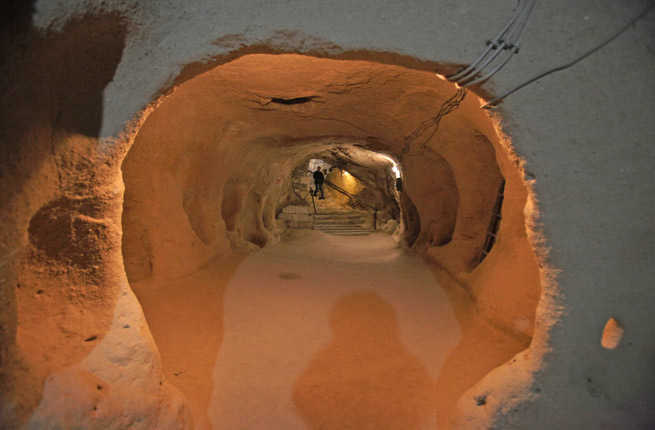
Derinkuyu Underground City
Cappadocia, Turkey
While the origins of this underground city are still unknown, it is thought have been built around 800 or 1000 BC. Turkey, home to several underground cities, boasts Derinkuyu as the largest, delving over 250 feet into the earth, and able to house between 35,000 to 50,000 people. It is presumed the underground city was used as a means to protect the populace from invasion. The public can now tour eight floors, seeing rooms, stables, cellars, tunnels, and passageways. If claustrophobic proceed with caution—the tunnels are a tight squeeze.
PLAN YOUR TRIP: Visit the Fodor's Cappadocia and Central Turkey Guide
Kariz-e-Kish
Kish, Iran
Multi-million-year-old fossils, shells, and corals grace the ceilings in this Iranian-island underground sight. Created as aqueducts to irrigate the surrounding fields, the underground area is over 2,500 years old and was used to carry water from the mountains to the dry land below. Magnificent arches, clean design, and wide passages make this underground site feel eerily abandoned and create an awe-inspiring stroll. Currently experts are planning to re-design and expand Kariz-e-Kish to create a 10,000 square meter underground city, which will include restaurants, a museum, and gift shops.
Berlin Underground Bunkers
Berlin, Germany
Hidden behind subway station doors in Berlin one can find traces of the city's tumultuous past, including hidden cemeteries, air raid shelters, bunkers, and even an aircraft factory—all underground. In 1940, after heavy air raids, a bunker-building program was announced and about 1,000 bunkers and shelters were constructed. Today tourists can see artifacts, walk through twisting passages and visit one of the few remaining bunkers once used by the Third Reich. Or guests can tour the bunkers that were renovated during the Cold War to protect citizens in case of nuclear attacks. Pictures and artifacts will make it all-too-easy to imagine the terrible history of WWII and to contemplate the terrifying possibilities of World War III.
PLAN YOUR TRIP: Visit the Fodor's Berlin Guide


